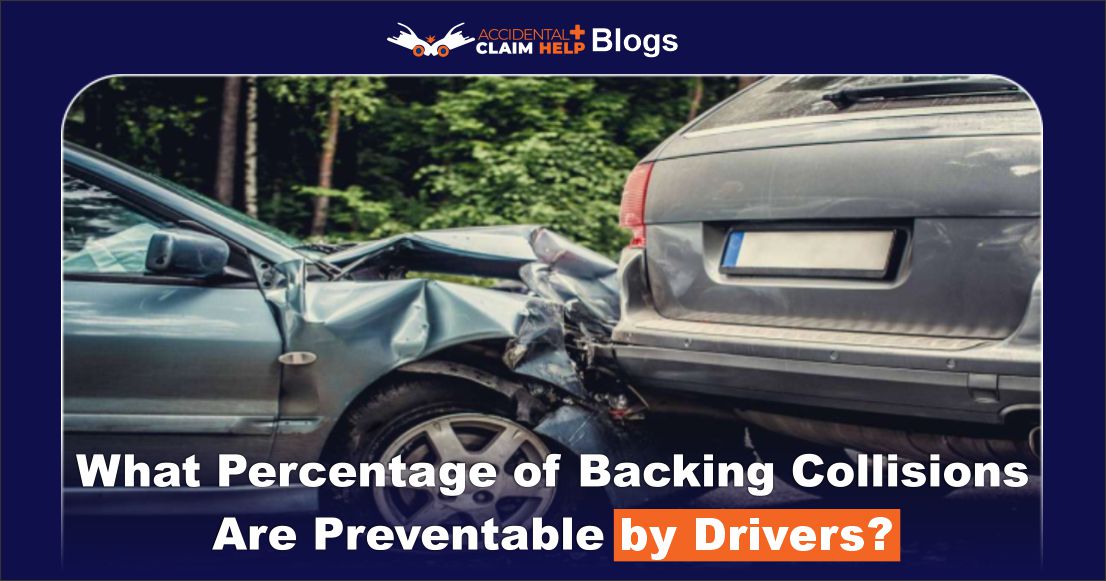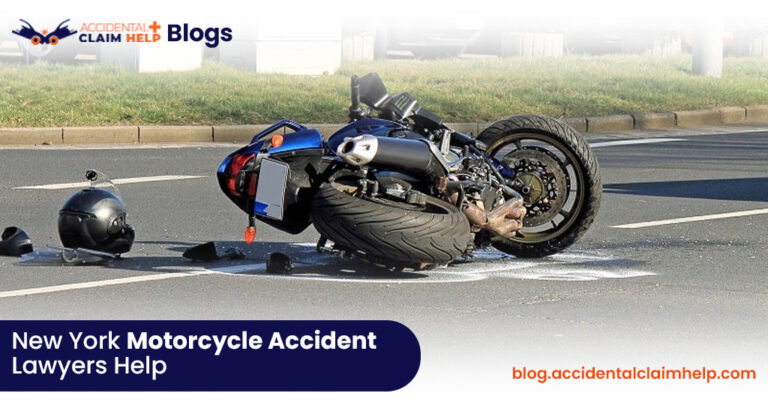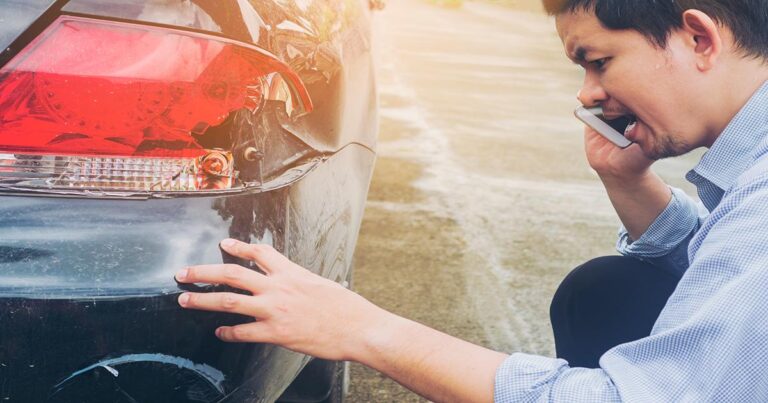What Percentage of Backing Collisions Are Preventable by Drivers?
Backing up—a routine part of driving—turns out to be surprisingly risky, even though most of these accidents are preventable. Studies show that about 92.3% of backing collisions could have been avoided through the driver’s actions. In the U.S., parking-lot and driveway maneuvers account for only about 1% of driving time, yet roughly 25% of all collisions happen during those brief backing movements. Every year, backing collisions injure thousands and even kill hundreds of people: industry sources report on the order of 500 deaths and 15,000 injuries annually in backing-up accidents. Pedestrians (especially young children and seniors) are often victims.
Backing vehicles can be involved in serious crashes. Larger vehicles like trucks have extensive blind spots behind them, making careful checking crucial before reversing.
How Preventable Are Backing Crashes?
The good news is that most backing crashes can be avoided by the driver. In fact, safety research consistently finds that nearly all of these accidents are due to driver choices or errors. For example, a comprehensive California Department of Transportation (Caltrans) analysis of workplace driving incidents found that 92.3% of backing crashes could have been prevented by the driver. In other words, only about 7.7% of backing collisions were “unavoidable” given those drivers’ actions. This finding echoes earlier studies by safety agencies. The federal view is similar: virtually all but fewer than 10% of backing collisions are avoidable if a driver takes proper precautions (meaning over 90% are preventable). By comparison, only about 47% of non-backing crashes are considered preventable through driver behavior. In summary, research suggests roughly nine out of ten backing accidents are due to driver error and could have been avoided.
This high preventability rate reflects the typical scenarios: backing crashes usually happen at low speed and involve situations where careful scanning and behavior could avert the collision. When drivers fail to look, misjudge a space, or get distracted, those mistakes immediately lead to a crash. On the other hand, many other crash types (like high-speed collisions) have more contributing factors beyond driver choices. But in backing, the driver’s actions are overwhelmingly decisive.
You may also read: What are Cognitive Distractions: Examples While Driving
Why Do Backing Accidents Happen?
Understanding common causes helps explain why backing crashes are so preventable. The reasons are almost all “human factors” – meaning things drivers can control. Key contributors include:
Limited visibility and blind spots
When a vehicle reverses, the field of vision is often restricted. Rear windows and mirrors have blind zones – sometimes extending dozens of feet, especially for trucks and SUVs. A classic example is a medium-duty truck, whose blind spot can stretch up to 160 feet behind the vehicle. Even in a car, the rear pillars, headrests, or passengers can hide objects and people. Research and safety experts repeatedly note that rear visibility is the root cause of most backing collisions. A driver might simply not see a pedestrian or obstacle directly behind the vehicle. Indeed, safety authorities warn drivers not to rely solely on cameras or sensors; these tools can fail or be obscured. The National Safety Council advises drivers to always look over their shoulder and use mirrors rather than trusting backup cameras entirely.
Driver inattention and distractions
Backing requires full attention, but all too often drivers lose focus. Distractions – dialing a phone, engaging in conversation, checking a GPS, or other diversions – can mean a driver never really checks the rear view. Some drivers expect someone else to notice their reversing (such as a parked pedestrian moving away) and thus do not actively scan. OSHA reports note that in workplace backovers, drivers sometimes “assume the area is clear and not look in the direction of travel,” leading to preventable strikes. In everyday terms, a texting or fatigued driver is unlikely to spot a small child behind a minivan. Distracted driving is a proven deadly problem; even in slow-speed maneuvers, taking one’s eyes off the path often causes backing crashes.
Improper backing technique and haste
Other human errors include poor technique or rushing. Some drivers back up too fast, reducing reaction time. Research suggests reversing slowly can greatly mitigate harm; driving backwards at high speed is unnecessary for a parking maneuver and greatly increases risk. Inexperience or lack of training also plays a role. New drivers or those who rarely reverse larger vehicles may misjudge steering or distance. Not using a spotter in situations where one is available (such as in busy yards or near children) adds risk – yet studies emphasize that drivers often skip the extra eyes that could prevent an accident.
Failure to do a walkaround
Simple preparation is often skipped. The safest drivers perform a complete circle-walk to inspect behind their vehicle before shifting into reverse. This instantly removes hidden dangers like small objects or people. Yet many drivers simply back up and then turn to look. Any delay or step – even stepping out once – can spot hazards that cameras might miss.
In short, nearly every backing crash boils down to something a driver did (or didn’t do). Studies of fatal work accidents show that backing up trucks frequently involve workers in blind spots; OSHA underscores that using spotters or backing slowly are critical to avoid these tragedies. Outside of workplaces, drivers are similarly responsible. Therefore, improving driver behavior (training, attentiveness, and procedures) is widely seen as the key way to eliminate backing crashes.
Blind Spots and Equipment Limits
Technological aids (backup cameras, sensors) help but don’t eliminate the problem. Modern vehicles mandated to have rear cameras since 2018 still have blind spots outside the camera view. The National Safety Council specifically warns against over-reliance on gadgets: “Don’t rely on technology; look over your shoulder and use your mirrors as you back up.” Backup sensors and alarms can alert drivers to large objects, but small children or low obstacles often go undetected. In fleet and trucking environments, employers encourage rear radar and spotter use. But ultimately, it is the driver’s responsibility to confirm the path is clear.
Human Factors: Distraction, Fatigue, and Assumptions
Behind nearly every backing crash is a lapse in the driver’s focus or judgment. Even temporarily taking hands off the wheel to adjust a mirror or attend to a child can lead to disaster. Fatigued drivers or those under time pressure may skip safety steps. Across all driving, human error is the cause of most crashes, and backing collisions are no exception. Unlike high-speed highway crashes where other factors (road design, weather) might dominate, backing accidents are almost entirely driven by what the driver does or fails to do.
Backing Accidents in Personal, Commercial, and Fleet Vehicles
Backing collisions happen across all vehicle types, but with some differences:
Personal and Everyday Vehicles
Most people think of backing accidents as fender-benders in parking lots or driveways. Indeed, a typical scenario is a car reversing out of a space into another car or striking a pedestrian. These collisions usually cause property damage (dents, broken lights) and can injure occupants or passersby. While often low-speed, they can be deadly (especially for children). The statistics above (25% of crashes, 500 deaths/15k injuries annually) largely come from personal vehicle incidents. Surveys and experts stress that routine parking-lot backing is a major safety gap.
Commercial Trucks and Vans
Large vehicles are in most cases a smaller share of total accidents, but their backing crashes can be severe due to size. Drivers of trucks, delivery vans, and heavy equipment face bigger blind zones. OSHA data on construction vehicles (dump trucks, semi-trailers, etc.) show backing was a factor in dozens of worker fatalities. In state crash reports, backing accounts for a few percent of heavy-truck accidents. One study of Alabama truck crashes found that about 4.2% of all reported truck wrecks involved improper backing. While that seems small, it still represents hundreds of incidents. Commercial fleets often have strict backing policies (like requiring spotters) for this reason.
Fleet and Work Vehicles
Company cars, delivery fleets, and government vehicles have additional oversight. Fleet operators widely recognize backing as a safety issue. Many fleets prohibit backing when possible or mandate training. For example, FMCSA (the federal trucking regulator) and organizations like the National Safety Council provide back safety training for fleet drivers. OSHA guidelines also target workplace vehicles of all sizes, urging employers to implement spotter systems, alarms, and internal traffic controls to keep backing incidents down. In practice, any vehicle used on a site (even forklifts or maintenance trucks) requires caution when reversing. The takeaway is that regardless of vehicle type, backing crashes depend on driver attention and procedures.
Tips to Reduce Backing Accidents
Given that most backing crashes are preventable by behavior, drivers can take concrete steps to avoid them. Experts advise:
- Walk Around and Scan First: Always do a 360-degree walk-around of your vehicle before backing up. A quick circle check exposes children, objects, or uneven ground that cameras or mirrors might miss. Even a handful of extra seconds to look can stop a crash in its tracks.
- Use Mirrors and Cameras Wisely: Adjust your side and rearview mirrors correctly to minimize blind spots. Then, as you reverse, physically turn your head to check blind areas that mirrors don’t cover. Backup cameras and sensors should be treated as aids, not sole eyes; always double-check the view on the device with a direct line of sight.
- Go Slow and Steady: Back up at a crawl. Slowing down gives you more time to notice hazards and stop in time. If you do strike an object or person at very low speed, injuries and damage will be much less severe.
- Choose the Easiest Path (Avoid Backing When Possible): Whenever you park, think about how you’ll leave. Whenever practical, back into the space so your forward exit is clear, or use a pull-through space. Even backing into a driveway or alley (if local regulations permit) means you can drive out forwards later. Planning parking like this drastically cuts down the need to back up in traffic.
- Use a Spotter or Backup Alarms: In tricky environments (narrow lots, busy construction zones, around children), have someone guide you from outside the vehicle. Communicate clear hand signals and maintain eye contact. If no one is available, at least honk or use any reverse warning devices to alert nearby people.
- Stay Focused and Alert: Remove distractions. Keep the radio volume low or off, put the phone away, and don’t engage in deep conversation while reversing. Parking lots and yards are not places for multitasking. Make backing up your sole task until you’ve cleared the maneuver. Also, ensure you’re well-rested; driver fatigue contributes to lapses in all driving situations.
Key Takeaways
Backing collisions represent a surprising share of vehicle accidents, yet research shows the vast majority are avoidable by careful driving. Studies consistently report that around 90–92% of backing crashes could have been prevented if the driver had acted differently. The bottom line for every U.S. driver – whether in a commuter car, delivery van, or company fleet vehicle – is that backing safely is almost entirely in your hands. Human factors like inattention, poor visibility, or rushed behavior are usually to blame.
Fortunately, there is much that can be done. Always check your surroundings, use mirrors and cameras correctly, and train yourself to back up only when safe. Follow simple rules (walk around, go slow, use spotters) and you’ll eliminate virtually all backing collisions from your driving record. In summary, backing safely is 98% up to the driver. By taking responsibility and following proven safety tips, drivers can greatly reduce accidents, protecting themselves and vulnerable bystanders alike.







